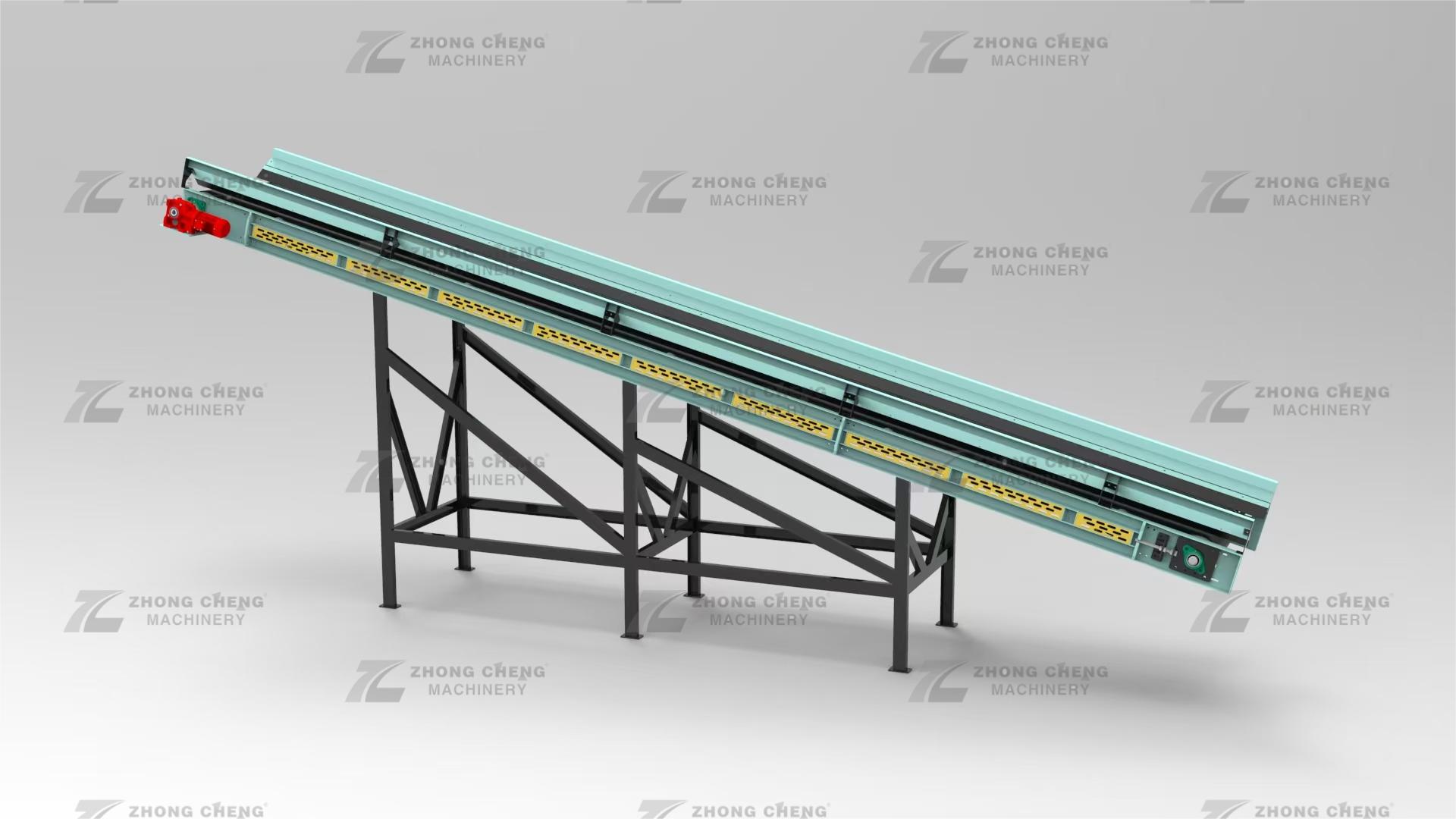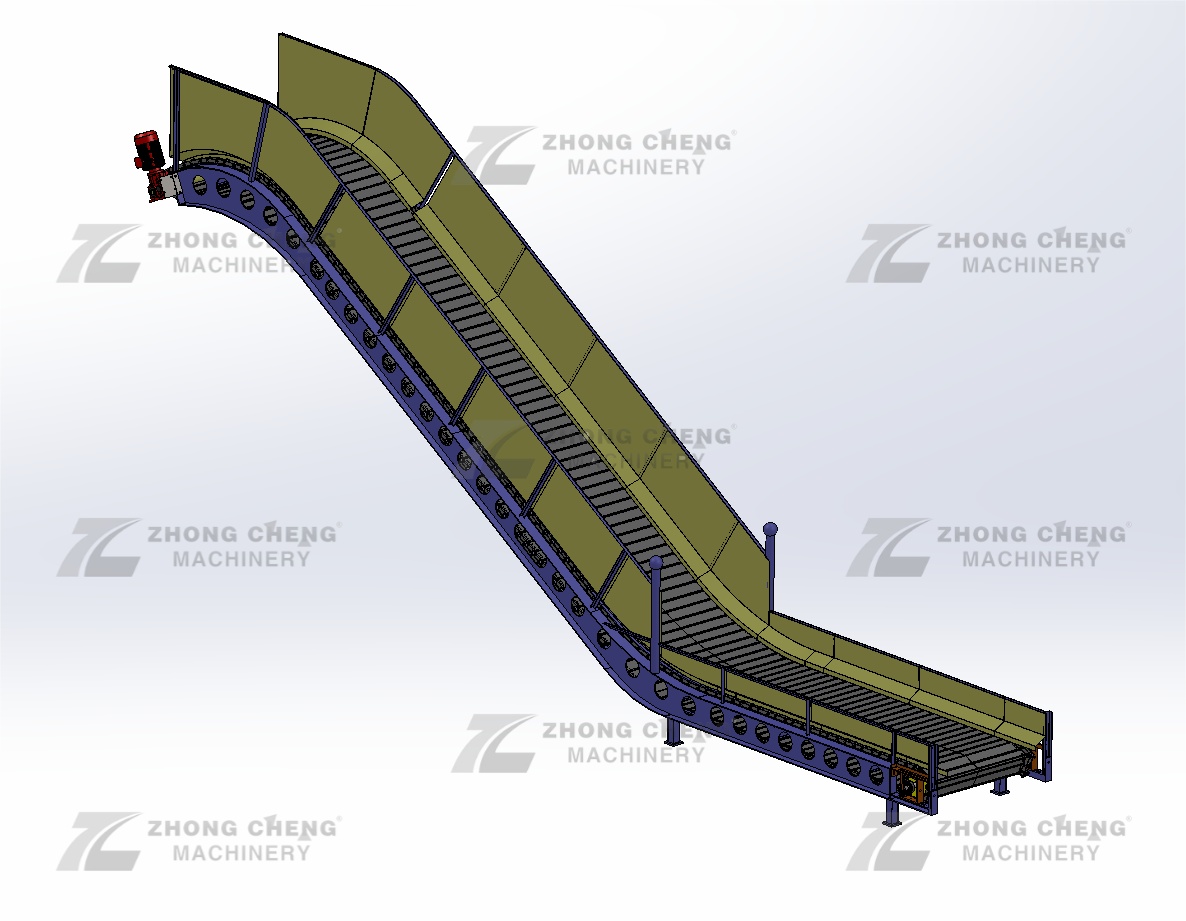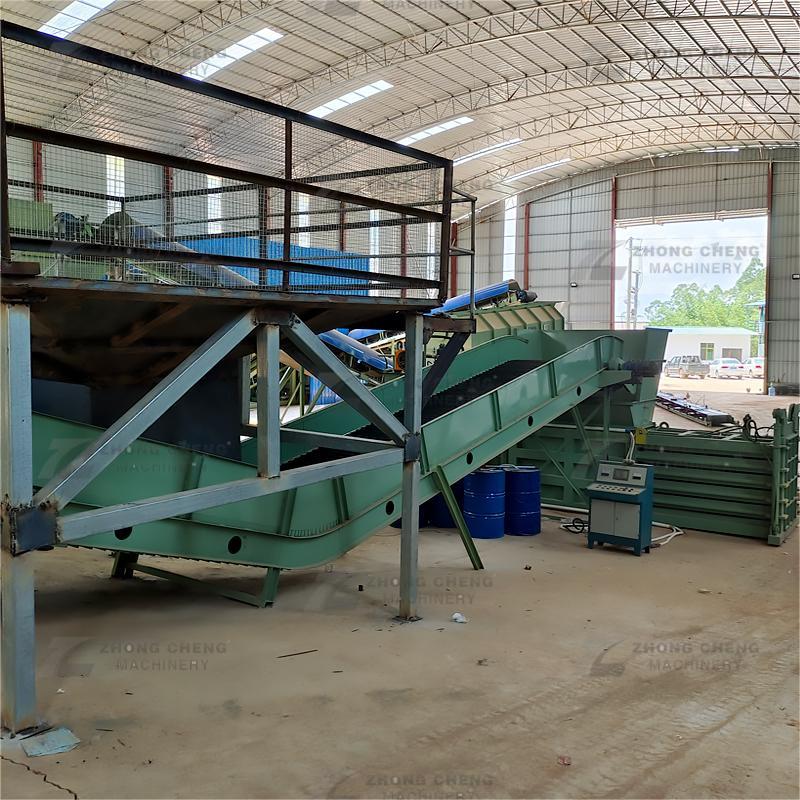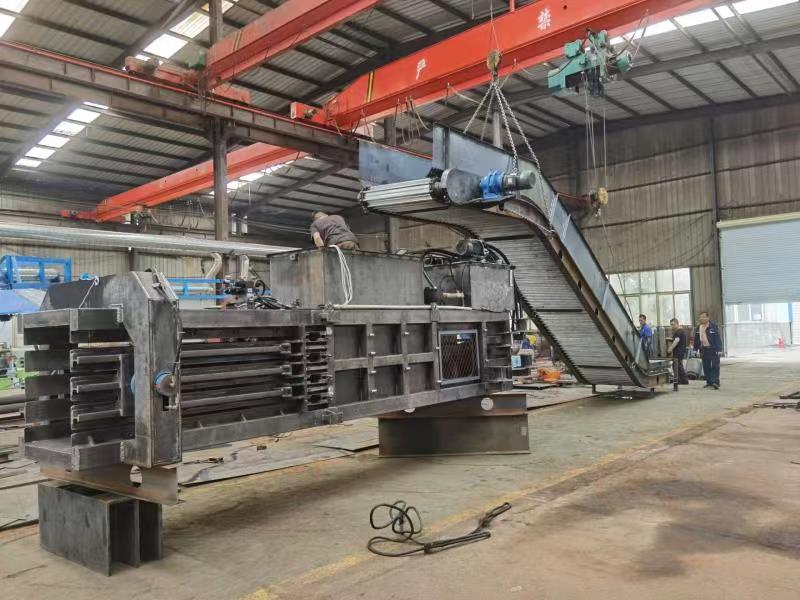Belt conveyor VS. Apron Conveyors in Waste Sorting
In the realm of waste management and recycling, the efficiency of sorting and processing materials is paramount. Among the various technologies employed, belt conveyors and apron (chain plate) conveyors play crucial roles in the transportation and handling of waste materials. These systems are designed to move items from one point to another within a facility, but they operate on different principles and have distinct characteristics that make them suitable for specific applications.
Belt Conveyor (Belt Conveyor

Principle of Operation:
A belt conveyor consists of two or more pulleys, with an endless loop of conveyor belt that rotates around them. One or both of the pulleys are powered, driving the belt and the material forward. The belt itself can be made of rubber, fabric, plastic, or other materials, depending on the application and the type of material being conveyed. In waste sorting, the belt is often designed to withstand the abrasive nature of the materials and resist tearing and puncturing.
Applications in Waste Sorting:
Belt conveyors are widely used in waste sorting facilities due to their ability to handle a wide range of materials, including paper, plastics, metals, and organic waste. They are particularly effective for moving lightweight and non-abrasive materials over relatively short distances. The smooth surface of the belt allows for easy cleaning, which is essential in maintaining hygiene standards in waste processing environments.
Apron Conveyor (Apron Conveyor)

Principle of Operation:
An apron conveyor, also known as a chain plate conveyor, utilizes a series of linked plates or pans that are connected to chains or belts running over sprockets. The movement of the chain or belt causes the plates to slide along the bottom of the conveyor, carrying the material forward. The plates can be made of steel or other durable materials, providing a robust surface that can handle heavy, sharp, and abrasive materials without significant wear.
Applications in Waste Sorting:
Apron conveyors are ideal for conveying heavy, bulky, or irregularly shaped materials that might damage a belt conveyor. They are commonly found in applications where the material is likely to contain sharp edges, such as construction and demolition waste, or where the load is exceptionally heavy, such as in metal scrap processing. The design of the apron conveyor allows it to maintain its integrity even when subjected to high impact loads, making it a reliable choice for tough industrial environments.
Key Differences

-Material Handling Capabilities:
Belt Conveyors:Best suited for lighter, less abrasive materials.
Apron Conveyors: Designed to handle heavy, sharp, and abrasive materials.
Durability and Maintenance:
Belt Conveyors:Generally require regular maintenance to prevent belt slippage and ensure proper tension. They may need replacement if damaged by sharp objects.
Apron Conveyors: More durable and resistant to damage from heavy or sharp materials. However, the chains and plates may require lubrication and periodic inspection for wear.
Cost and Efficiency:
Belt Conveyors: Typically lower in cost and easier to install. They are energy-efficient for lighter loads.
Apron Conveyors: Higher initial cost and more complex installation, but offer better long-term durability and reliability for heavy-duty applications.

Hygiene and Cleanability:
Belt Conveyors:Easier to clean due to the smooth surface of the belt.
Apron Conveyors:May accumulate debris between the plates, requiring more thorough cleaning procedures.
| BC800 | BC1000 | BC1200 | BC1400 | BC1600 | |
| Belt Width | 800mm | 1000mm 1 | 200mm | 1600mm | 1800mm |
| Length | optional | optional | optional | optional | optional |
| Belt Speed | <1.2m/s | <1.2m/s | <1.2m/s | <1.2m/s | <1.2m/s |
| Installation | angle < 21° | angle < 21° | angle < 21° | angle < 21° | angle < 21° |
| Throughput | 20-30m³/h | 40-50m³/h | 60-70m³/h | 80-90m³/h | 90-100m³/h |
| Power | >3Kw | >3Kw | >3Kw | >3Kw | >3Kw |
Both belt conveyors and apron conveyors are indispensable in modern waste sorting and recycling operations. The choice between the two depends on the specific requirements of the facility, including the type and volume of materials being processed, the budget available, and the operational environment. By understanding the principles and differences between these two types of conveyors, waste management professionals can make informed decisions to optimize their sorting processes and improve overall efficiency.
-
 Trommel screenTrommel screen, also known as drum screens, are widely used in various industries for sorting and separating materials.Get Quote
Trommel screenTrommel screen, also known as drum screens, are widely used in various industries for sorting and separating materials.Get Quote -
 Crop straw double shaft shreddApplications:Biomass Energy Production: Shredded straw can be used as a feedstock for bioenergy plants to produce electricity or heat.Livestock Feed: Reduced-si...Get Quote
Crop straw double shaft shreddApplications:Biomass Energy Production: Shredded straw can be used as a feedstock for bioenergy plants to produce electricity or heat.Livestock Feed: Reduced-si...Get Quote -
 Zhongcheng Air Drum SeparatorAir drum separators effectively separate lightweight materials (e.g., plastics, paper) from heavier materials (e.g., metals, glass). This high efficiency is cru...Get Quote
Zhongcheng Air Drum SeparatorAir drum separators effectively separate lightweight materials (e.g., plastics, paper) from heavier materials (e.g., metals, glass). This high efficiency is cru...Get Quote
-
2024-08-20A rubber double shaft shredderExamples of Specific Models:GDB Series Biomass Shredder: Although primarily designed for biomass materials, this model can also be configured to handle various ...
-
2024-05-20Mobile Impact Crusher PlantThe mobile impact crusher plant is a kind of crushing equipment based on a mobile platform. It uses an impact crusher as the host machine and is usually equippe...
-
2024-06-06Drum Screen For Composting PlantDrum screen, also known as a rotary drum screen or trommel screen, is an essential piece of equipment used in composting plants for the separation of compost ma...
-
2024-07-16Twin-shaft shredders: ideal for efficient processing of waste and recycling materialsA double-shaft shredder is a mechanical device used to process waste and recycle materials. Its main feature is that it has two rotating shafts with serrated bl...
-
2023-01-12Disc ScreenDisc screen, also known as a disc scalping screen, is a mechanical device used to separate materials based on size. It is commonly used in industries such as wa...



